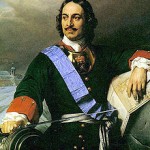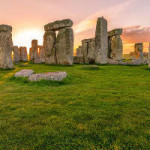What does it mean to say “The Real McCoy”?
What does it mean to say “The Real McCoy”?
May 09Obviously this is an expression that means the real thing, not a substitute. But why does one call the real thing “The Real McCoy”
There is not a clear single source for this expression. While there are examples that date back to the early and mid 19th Century, I believe that its use in modern vernacular really doesn’t date back that far.
The expression, “The real MacKay”, is a Scots phrase that first appeared in print in 1856 as “A drappie o’ the real MacKay”, suggesting a desire for a bottle of Scotch Whiskey from G. Mackay & Co. Ltd. Robert Louis Stevenson, the well known and well read author of Treasure Island, Kidnapped, and the Strange Case of Dr. Jekyll and Mr. Hyde, wrote in an 1883 letter saying “He’s the real Mackay.” It’s believed that as Scottish families moved to Ireland, their names, MacKay, Mackie, McGee, Magee and McCoy eventually settled more or less on McCoy.
I don’t believe that this expression would be a part of our vernacular but for a very entrepreneurial sea captain by the name of William Frederick “Bill” McCoy born in Syracuse, N.Y. in 1877.
The era of Prohibition was started as a noble experiment under the Volstead Act of 1919. Incidentally, Woodrow Wilson vetoed the bill (H.R. 6810) but was overridden by the House and Senate to become law. Noble, maybe, a disaster for law enforcement and public attitudes and mores, absolutely. Again incidentally, the Volstead act did not specifically prohibit the consumption of alcohol, just the sale and transport. Also, each citizen was allowed to make at home up to 200 gallons of wine and hard fruit cider (but not beer) a year.
There developed a thriving market in black market alcohol and like any banned substance, the profits from being able to provide the banned substance went through the roof. There was big money to be made in helping the public to get inebriated. If we think the profits from a successful bar operation are high today, you can only imagine what it must have been like. So many methods developed to satisfy this demand. One of the more interesting we refer to as “bathtub gin”, a cheap grain alcohol. One of the cheapest ways to produce cheap grain alcohol was to use pine tar. While this product would in fact get the drinker drunk as a skunk, skunk is the operative word. It tasted terrible and smelled even worse. To mask the smell the speakeasy would mix in fruit juice or soda syrup. Many of our well known bar drinks, such as the Cosmopolitan or the Rob Roy, developed in this fashion.
One of the most profitable scams was to take a bottle of an expensive and probably legitimate alcohol, like Canadian Club Whiskey, the source of wealth for the Bronfman family then of Canada where alcohol was legal, and put a cheap substitute inside. The margins were enormous as the bootlegger was getting a premium price and delivering a garbage product. This is a favorite scam of the mob to this day, substituting cheap machined nuts and bolts for extremely well formed and expensive aircraft parts. So how was the buyer to have confidence in their purchase?
This is where Bill McCoy enters the story. Bill would sail his ships, the Tomoka, the Henry L. Marshall, and a half dozen other ships from Nassau ladened with legitimate booze. He would lay off the East Coast of the U.S., outside of U.S. territorial waters in international waters, and wait for the rumrunners to sidle up their superfast speedboats. His reputation for honest dealing was well known. So well known, that if asked to vouch for the quality of the alcoholic product in the bottles it became standard to refer to the source as being from Captain Bill McCoy. Eventually this took the form of “The Real McCoy.”






